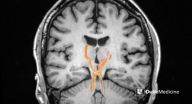(Press-News.org) PITTSBURGH, June 3, 2015 - Pregnant women living close to a high density of natural gas wells drilled with hydraulic fracturing were more likely to have babies with lower birth weights than women living farther from such wells, according to a University of Pittsburgh Graduate School of Public Health analysis of southwestern Pennsylvania birth records.
The finding does not prove that the proximity to the wells caused the lower birth weights, but it is a concerning association that warrants further investigation, the researchers concluded. The study was funded by The Heinz Endowments and published in the current issue of PLOS ONE.
"Our work is a first for our region and supports previous research linking unconventional gas development and adverse health outcomes," said co-author Bruce Pitt, Ph.D., chair of Pitt Public Health's Department of Environmental and Occupational Health. "These findings cannot be ignored. There is a clear need for studies in larger populations with better estimates of exposure and more in-depth medical records."
Unconventional gas development includes horizontal drilling and high volume hydraulic fracturing, known as "fracking." It allows access to large amounts of natural gas trapped in shale deposits. Prior to 2007, only 44 wells were known to be drilled in Pennsylvania's Marcellus Shale with such technology. From 2007 to 2010, that expanded to 2,864 wells.
The Pitt Public Health research team cross-referenced birth outcomes for 15,451 babies born in Washington, Westmoreland and Butler counties from 2007 through 2010 with the proximity of the mother's home to wells drilled using unconventional gas development. They divided the data into four groups, depending on the number and proximity of wells within a 10-mile radius of the mothers' homes.
Mothers whose homes fell in the top group for proximity to a high density of such wells were 34 percent more likely to have babies who were "small for gestational age" than mothers whose homes fell in the bottom 25 percent. Small for gestational age refers to babies whose birth weight ranks them below the smallest 10 percent when compared to their peers.
The researchers took into account many factors that could influence a newborn's weight - including whether the mother smoked, her prenatal care, race, education, age and whether she'd had previous babies, as well as the gender of the baby - and the finding still held.
"Developing fetuses are particularly sensitive to the effects of environmental pollutants," said Dr. Pitt. "We know that fine particulate air pollution, exposure to heavy metals and benzene, and maternal stress all are associated with lower birth weight."
In southwestern Pennsylvania, the waste fluids produced through hydrofracturing, called "flowback," can contain benzene. Unconventional gas development also creates an opportunity for air pollution through flaring of methane gas at the well heads and controlled burning of natural gas that releases volatile organic compounds, including benzene, toluene, ethylbenzene and xylene. Increased truck traffic and diesel-operated compressors also can contribute to air and noise pollution.
"It is important to stress that our study does not say that these pollutants caused the lower birth weights," said Dr. Pitt. "Unconventional gas development is dynamic and varies from site to site, changing the potential for human exposure. To draw firm conclusions, we need studies that thoroughly assess the exposure of a very large number of pregnant women to not just the gas wells, but other potential pollutants."
INFORMATION:
Shaina L. Stacy, Ph.D., a recent graduate of Pitt Public Health, is lead author on this research, and Evelyn Talbott, Dr.P.H., epidemiology professor at the school, is senior author. Additional authors are LuAnn L. Brink, Ph.D., and Bernard D. Goldstein, M.D., both of Pitt Public Health; and Jacob C. Larkin, M.D., and Yoel Sadovsky, M.D., both of Magee-Womens Research Institute and Pitt School of Medicine.
About the University of Pittsburgh Graduate School of Public Health
The University of Pittsburgh Graduate School of Public Health, founded in 1948 and now one of the top-ranked schools of public health in the United States, conducts research on public health and medical care that improves the lives of millions of people around the world. Pitt Public Health is a leader in devising new methods to prevent and treat cardiovascular diseases, HIV/AIDS, cancer and other important public health problems. For more information about Pitt Public Health, visit the school's Web site at http://www.publichealth.pitt.edu.
http://www.upmc.com/media
Contact: Allison Hydzik
Phone: 412-647-9975
E-mail: HydzikAM@upmc.edu
Contact: Courtney McCrimmon
Phone: 412-586-9773
E-mail: McCrimmonCP@upmc.edu
PHILADELPHIA - Individuals with a higher level of moral reasoning skills showed increased gray matter in the areas of the brain implicated in complex social behavior, decision making, and conflict processing as compared to subjects at a lower level of moral reasoning, according to new research from the Perelman School of Medicine and the Wharton School of the University of Pennsylvania in collaboration with a researcher from Charité Universitätsmediz in Berlin, Germany. The team studied students in the Masters of Business Administration (MBA) program at the Wharton ...
Researchers have analysed the genomes of thousands of women in the UK and the Netherlands to measure the extent to which a woman's genes play a role for when she has her first baby and how many children she will have. Significantly, they have found that some women are genetically predisposed to have children earlier than others, and conclude that they have passed down their reproductive advantage to the next generation. They also find, however, that while modern women who were born in the 20th century might be expected to have babies even earlier than previous generations ...
WYNNEWOOD, PA--June 3, 2015--a study led by Ellen Heber-Katz, PhD, of the Lankenau Institute for Medical Research (LIMR), part of Main Line Health (MLH), shows that a primordial form of energy production that still exists in mammals can be harnessed to achieve spontaneous tissue regeneration in mice, without the need for added stem cells. The study findings were reported in the June 3, 2015, issue of Science Translational Medicine, a peer-reviewed journal of the American Association for the Advancement of Science. Key collaborators in the study, which was supported by grants ...
A lot of problems, associated with the mixing of the liquid in the microchannels, could be solved via proper organization of the inhomogeneous slip on the walls of these channels. This is the conclusion made by the joint group of Russian and German scientists lead by Olga Vinogradova, who is a professor at the M.V. Lomonosov Moscow State University and also a head of laboratory at the A.N. Frumkin Institute of Physical chemistry and Electrochemistry of the Russian Academy of Sciences. The article describing their theory was published in the latest issue of the journal ...
Scientists are beginning to unwrap the biology behind why some people are more prone to major depression and other psychiatric disorders than others when experiencing stressful life events. The researchers found that cellular activity in response to stress hormone receptor activation differs from individual to individual. The study, led by Janine Arloth, Ryan Bogdan, and Elisabeth Binder at the Max Planck Institute of Psychiatry in Germany, also shows that the genetic variations underlying this difference in stress response correlate with dysfunction in the amygdala, a ...
This news release is available in German. Scientists at the German Center for Neurodegenerative Diseases (DZNE) and the University of Bonn led by Prof. Stefan Remy report on this in the journal "Neuron". Their investigations give new insights into the workings of spatial memory. Furthermore, they could also help improve our understanding of movement related symptoms associated with Parkinson's disease.
In a familiar environment our movements are purposeful. For example, if we leave our office desk for a coffee break, we naturally follow a predefined route that has ...
This news release is available in German.
Contaminated samples have evidently created some confusion in the timetable of life. On the basis of ultra-clean analyses, an international team, including scientists from the Max Planck Institute for Biogeochemistry, has disproved supposed evidence that eukaryotes originated 2.5 to 2.8 billion years ago. In contrast to prokaryotes such as bacteria, eukaryotes have a nucleus. Some researchers thought they had discovered molecular remnants of living organisms in rock samples up to 2.8 billion years old. However, as the ...
A team of New York University neuroscientists has determined how a pair of growth factor molecules contributes to long-term memory formation, a finding that appears in the journal Neuron.
"These results give us a better understanding of memory's architecture and, specifically, how molecules act as a network in creating long-term memories," explains the paper's senior author, Thomas Carew, a professor in NYU's Center for Neural Science and dean of NYU's Faculty of Arts and Science. "More importantly, this marks another step toward elucidating the intricacies of memory ...
DURHAM, N.C. - Scientists at Duke Medicine have produced a 3-D map of the human brain stem at an unprecedented level of detail using MRI technology.
In a study to be published June 3 in Human Brain Mapping, the researchers unveil an ultra high-resolution brain stem model that could better guide brain surgeons treating conditions such as tremors and Parkinson's disease with deep brain stimulation (DBS).
The new 3-D model could eliminate risky trial-and-error as surgeons implant electrodes -- a change akin to trading an outdated paper road atlas for a real-time GPS.
"On ...
An international team of scientists led by Cardiff University researchers has provided the strongest evidence yet of what causes schizophrenia - a condition that affects around 1% of the global population.
Published today (17:00BST, 03/06/2015) in the journal Neuron, their work presents strong evidence that disruption of a delicate chemical balance in the brain is heavily implicated in the disorder.
In the largest ever study of its kind, the team found that disease-linked mutations disrupt specific sets of genes contributing to excitatory and inhibitory signalling, ...


